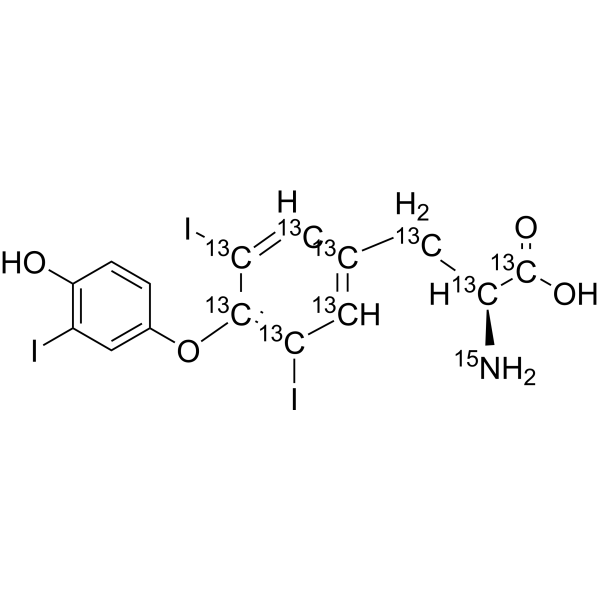Liothyronine-13C9,15N
Modify Date: 2024-01-17 13:39:55

Liothyronine-13C9,15N structure
|
Common Name | Liothyronine-13C9,15N | ||
|---|---|---|---|---|
| CAS Number | 1213569-04-0 | Molecular Weight | 660.90 | |
| Density | N/A | Boiling Point | N/A | |
| Molecular Formula | C613C9H12I315NO4 | Melting Point | N/A | |
| MSDS | N/A | Flash Point | N/A | |
Use of Liothyronine-13C9,15NLiothyronine-13C9,15N is the 13C and 15N labeled Liothyronine[1]. Liothyronine is an active form of thyroid hormone. Liothyronine is a potent thyroid hormone receptors TRα and TRβ agonist with Kis of 2.33 nM for hTRα and hTRβ, respectively[2][3][4]. |
| Name | Liothyronine-13C9,15N |
|---|
| Description | Liothyronine-13C9,15N is the 13C and 15N labeled Liothyronine[1]. Liothyronine is an active form of thyroid hormone. Liothyronine is a potent thyroid hormone receptors TRα and TRβ agonist with Kis of 2.33 nM for hTRα and hTRβ, respectively[2][3][4]. |
|---|---|
| Related Catalog | |
| In Vitro | Stable heavy isotopes of hydrogen, carbon, and other elements have been incorporated into drug molecules, largely as tracers for quantitation during the drug development process. Deuteration has gained attention because of its potential to affect the pharmacokinetic and metabolic profiles of drugs[1]. |
| References |
| Molecular Formula | C613C9H12I315NO4 |
|---|---|
| Molecular Weight | 660.90 |